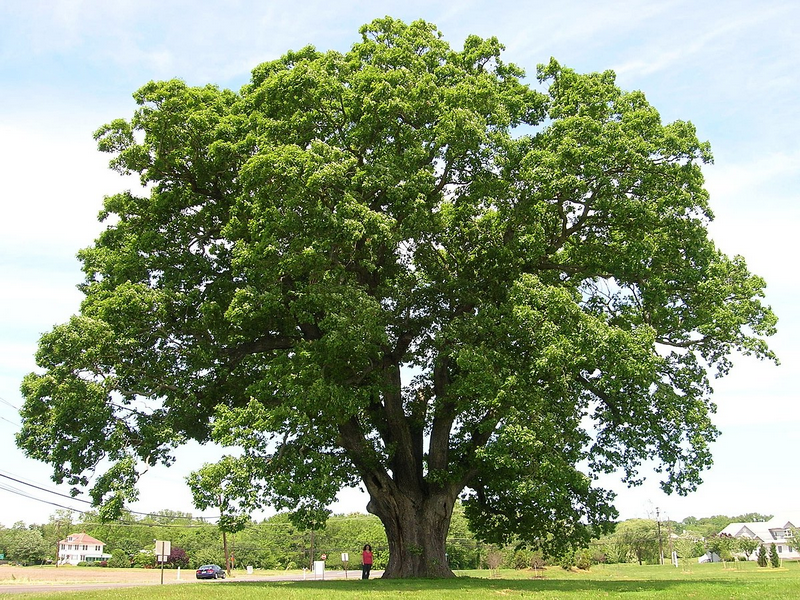White Oak Tree
Quercus alba
Click here to download a PDF of this plant information page (for printing).

Sun Exposure: Full Sun, Part Sun
Season of Interest: Summer, Fall
Bloom Time: April - May
Bloom Color: Gold (catkin)
Height: 50 to 135 ft.
Spread: 50 to 80 ft.
Spacing: 55 ft.
Water Needs: Average
Maintenance: Prune for shape when young
Soil Type: Clay, Loam, Sandy
Soil pH: Acidic
Soil Drainage: Well drained
Pests: Leaf miners, Galls
Diseases: Oak wilt, Leaf spot
Wildlife: Birds, Small mammals

Description:
Globally there are roughly 500 species of oak trees, with about 58 being native to North America. Quercus alba, the white oak, is one of the continent’s predominant tree species appearing throughout Eastern North America’s forests. While it will not disappoint as a design feature, it is essential to remember that oaks are among the most valuable native trees we can plant. The white oak provides a habitat and food for countless species of wildlife. The white oak is the best tree to plant to attract butterflies. It supports a ridiculous 934 caterpillar species! If you want to support pollinators and attract birds, planting white oaks is the way to ensure that will happen. As a symbol of strength and endurance, and its longevity and size make it apparent why. The white oak is much more resistant to disease than most other oaks. For more information see:
plants.ces.ncsu.edu/plants/quercus-alba
Care and Growing Tips:
When the white oak is planted in the open, its spread can be as wide as its height. If space is limited, a different species is a better choice for your landscape design. Even if you do have plenty of room you need to consider what will be in the area and around the tree and does its future size inhibits any future plans you might have for its space. If you have the space and the time, the rest of a white oak's care is an easy task that doesn't require much effort once the tree is established.
The white oak is a tree that thrives in full sun. Younger trees will tolerate some partial shade, but as the trees age, their ability to tolerate shade will become an issue. A noticeable difference will occur in trees planted in full sun. Besides tree health full sun, you will want to ensure full sun to get the absolute best fall colors. White oak prefers acidic to neutral soil that is deep moist, and well-draining. It does not tolerate alkaline or shallow soils. Newly planted white oaks should be watered regularly for the first season until established. When planting the tree, mulching beneath the canopy will help it establish itself and prosper in its new location by keeping the area moist and reducing competition with grass and other plants.
The white oak can exist in a wide range of temperatures, from a very frigid winter in Minnesota to a relatively mild Florida winter. White oaks do not need supplemental fertilization, but testing the soil and amending the soil can rule out soil deficiencies if the tree is not thriving. Waiting on the test results is important, but generally using a fertilizer with a low nitrogen content is best for oaks to avoid creating weak branch growth.